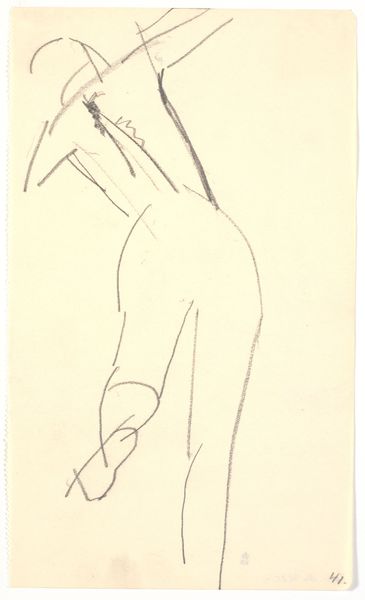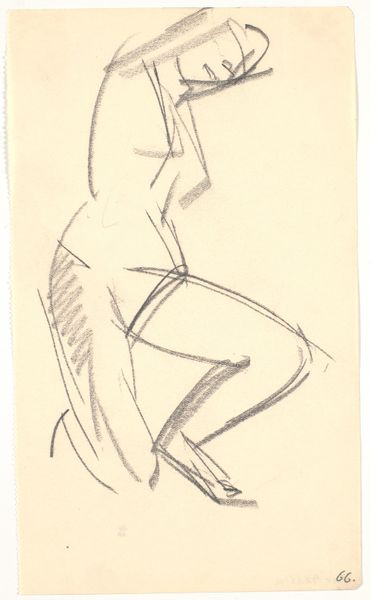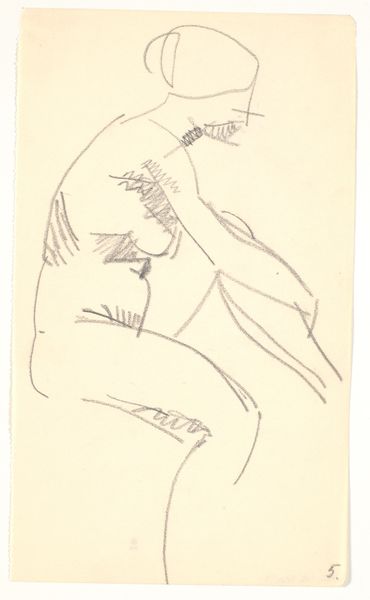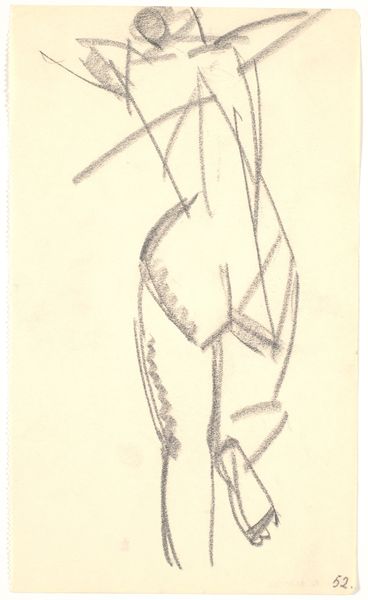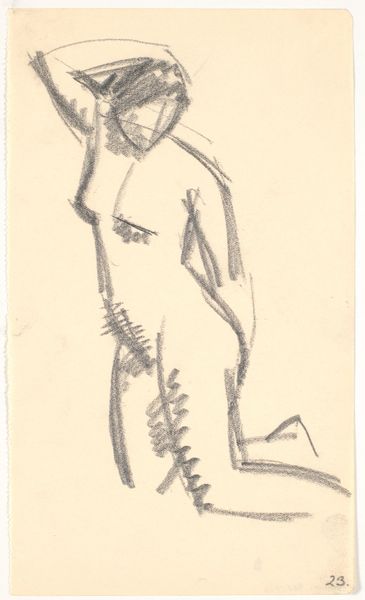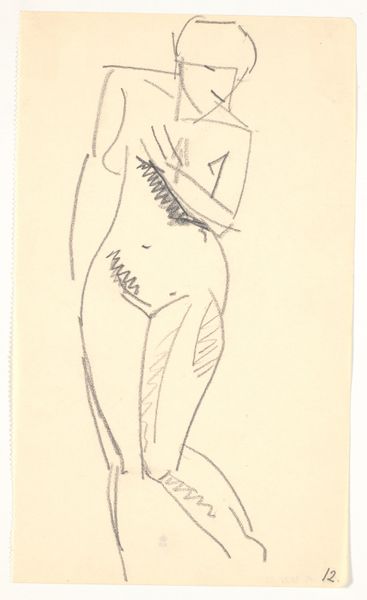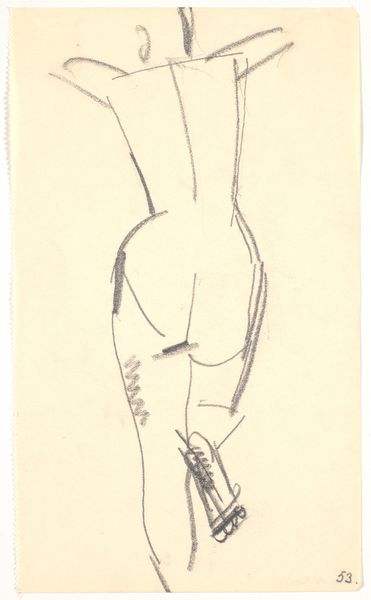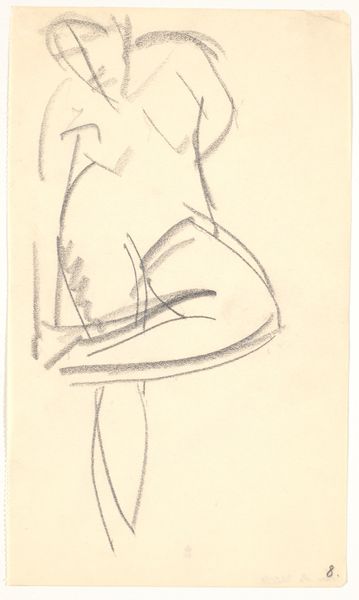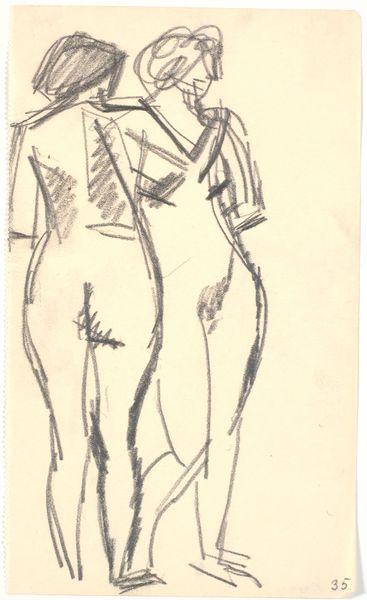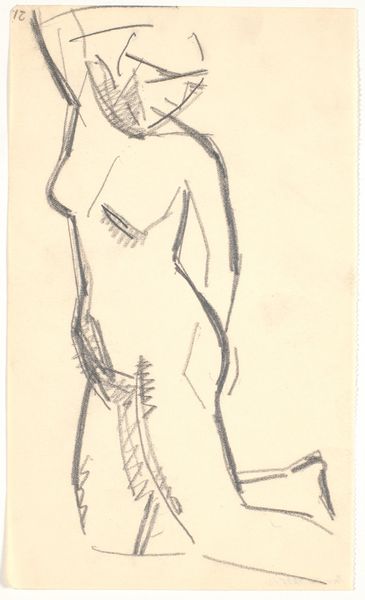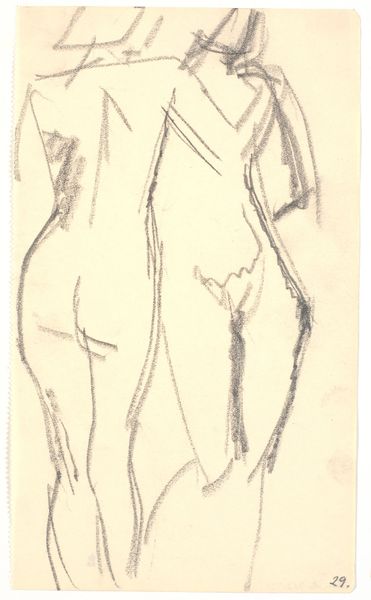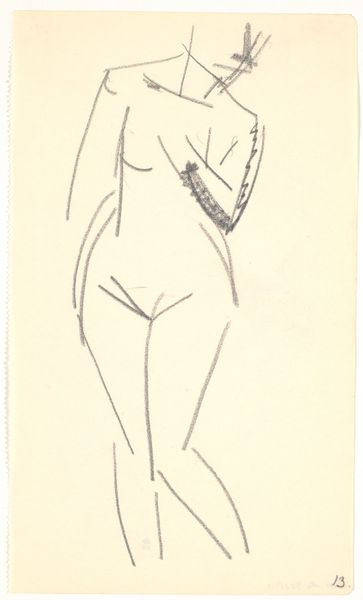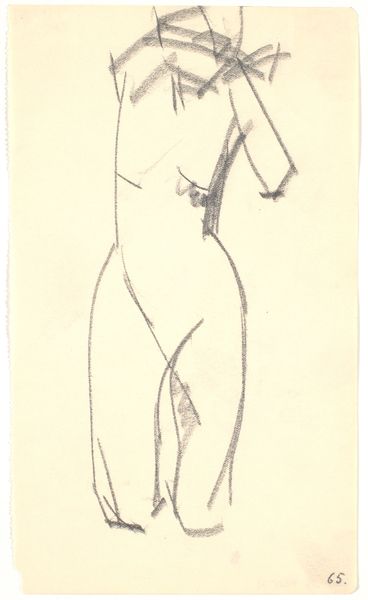
drawing, pencil
#
portrait
#
drawing
#
figuration
#
pencil
#
modernism
Dimensions: 209 mm (height) x 124 mm (width) (bladmaal)
Editor: This is "Standing Bent-Over Model" a pencil drawing by Karl Isakson, made sometime between 1914 and 1915. The figure’s pose makes me think about vulnerability but the angularity and somewhat rough execution feel almost aggressive. What strikes you most about this piece? Curator: I’m immediately drawn to the dynamism achieved through such minimal means. Look closely at the economy of line. Isakson uses swift, angular strokes to define form and suggest movement. Notice how the hatching technique isn't employed to render light and shadow traditionally but, instead, serves to delineate planes and volumes. Editor: So it's less about realistic representation and more about… abstracting the figure? Curator: Precisely. It's a departure from classical ideals of beauty and proportion. The simplification of the figure is striking. We can decode a semiotics of line and form here. The figure's posture is conveyed through sharp angles. These jagged lines don't soften, creating tension in contrast with the implied roundness of a body. Editor: That makes sense. The cross-hatching feels more structural than decorative. Did Isakson use similar techniques in other works? Curator: Absolutely. In many of Isakson's works we see an approach of using structural frameworks rather than aesthetic ornamentation, almost like architectural sketches prioritizing utility. In "Standing Bent-Over Model", his approach reflects an investigation into essence of form and function. Editor: Fascinating. I'll definitely look at his other drawings differently now. Curator: It's in those formal elements that we really start to see Isakson grappling with space, and movement through very few markings. Editor: Thank you for sharing these ideas; the approach to space and form now helps me appreciate how Isakson broke with tradition.
Comments
No comments
Be the first to comment and join the conversation on the ultimate creative platform.
